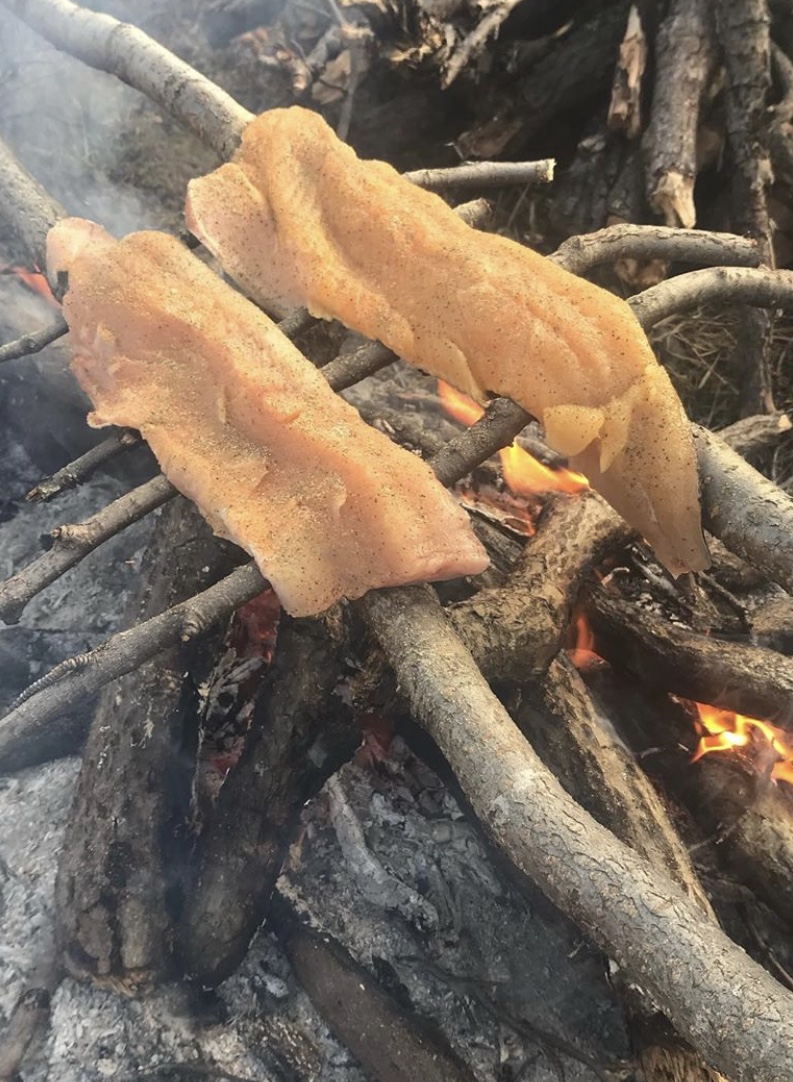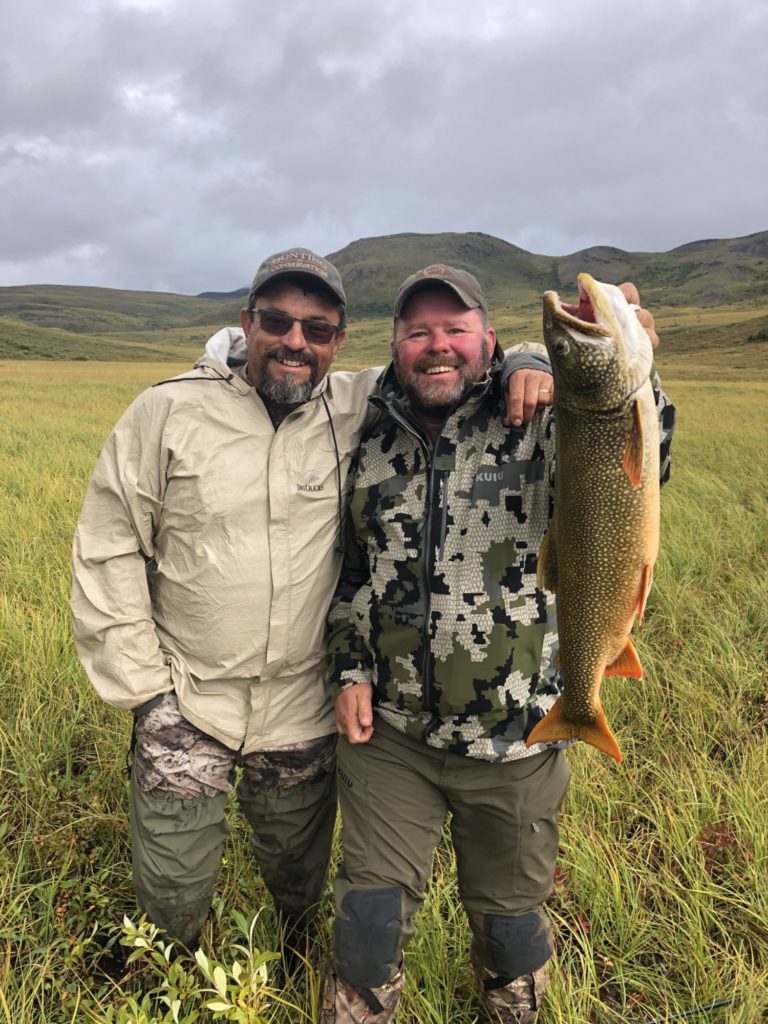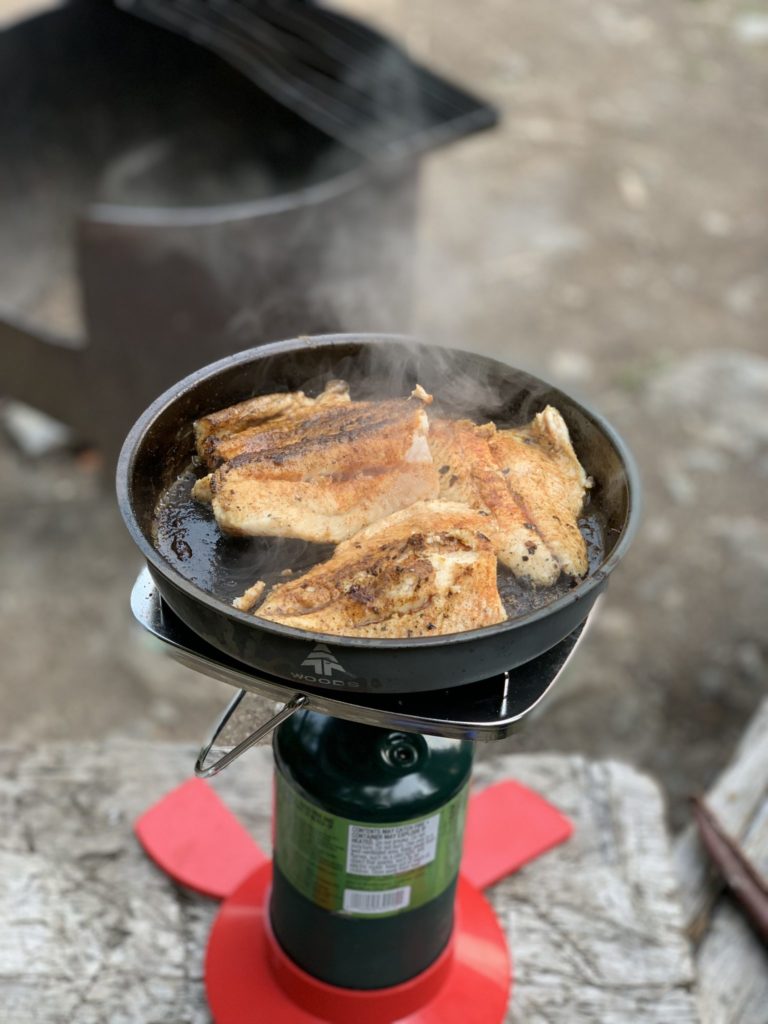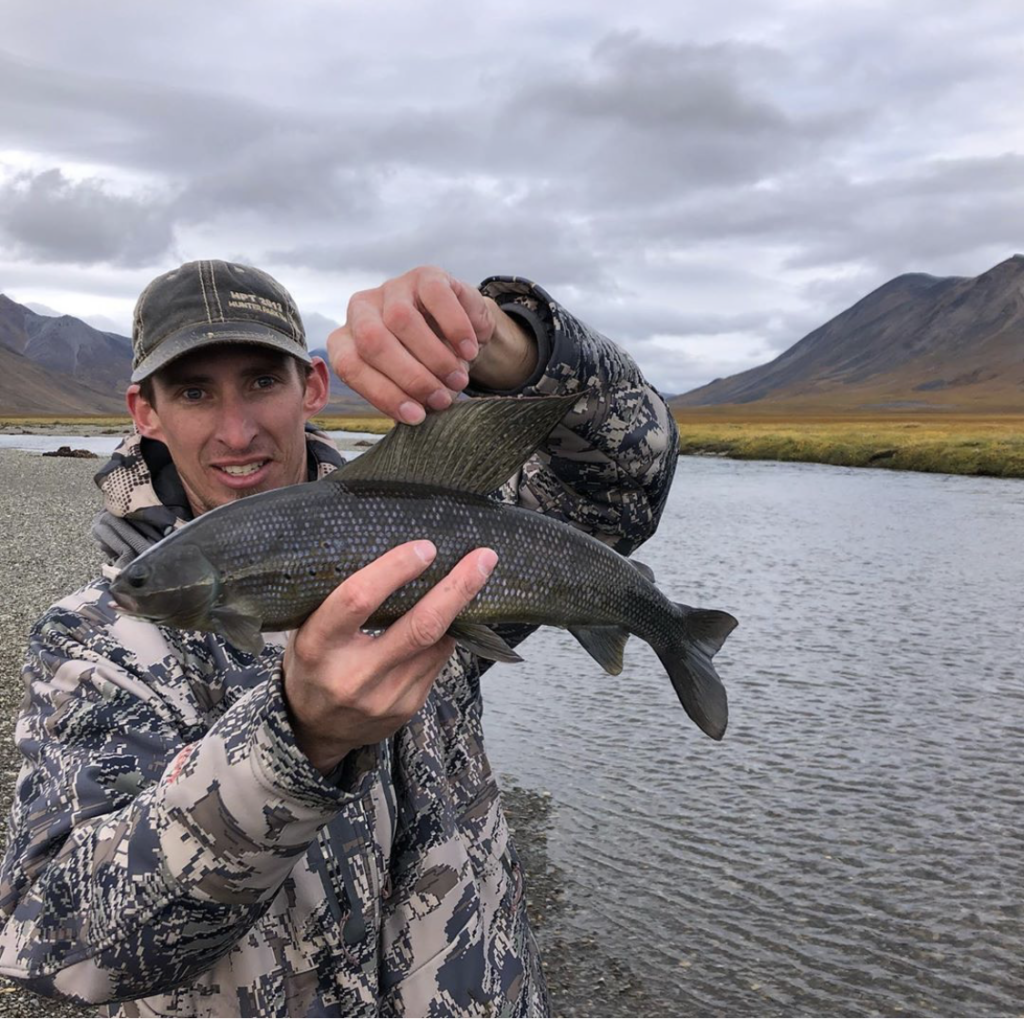Most likely, you won’t be camped in an area where there is good fishing, but it is possible. Some clients bring collapsible fishing equipment just in case they do get dropped in a spot with some fishing opportunity. Depending on your location and the time of year, the fishing could be great. Then again, it may not be good at all. Our focus is dropping you in a spot where you will have a successful hunt.
What you need for fishing on your drop hunt:
It’s fairly simple the things you’ll need. At bare minimum a fishing license and 10-15 lb. test line on a collapsible pole with a Pixee or Vibrax on the end of it!
- You must have a current Alaska Sportfishing License on you (we recommend the short term fishing licenses are much less expensive than annual licenses).
- Fly fishing: Grayling and char can be caught with a lightweight 4 to 6 weight, take down fly rod. Parachute Adams, red humpies, and Caddisflies are all known to be effective for grayling. You might also bring along a few copper johns and prince nymphs. Some lakes may have lake trout, so maybe bring along some streamers.
- Spin fishing: All you need are a few small spinners, spoons, and/or jigs. Grayling really seem to like white and black lures, but you might want to bring along some earth tones and a couple of brightly colored lures ase well. A light-action, collapsible spinning rod with 4 to 6 pound test monofilament for grayling and 10 to 15 pound test mono for Lake trout. We recommend just bringing the higher test. It’s overkill for grayling but will work just fine.
- Keep in mind, weight is key on a fly-in trip, so don’t go overboard with your fishing gear.

How to Fish for Arctic Grayling
June and July are the best times to catch grayling in Alaska, but you can still catch them well into September.
Summer is short so they are gorging themselves to survive the long winter. Grayling are territorial and occupy large pools in creeks and rivers. Because they rely on floating insects for much of their diet, these pools provide slower water that allows them to eat easier. Cold and clear water is also where arctic grayling thrive the best. Be sure to target riffles.
Grayling aren’t picky eaters.
Arctic grayling tend to mouth flies before eating them, unlike rainbow trout that normally devour. Considering that, don’t feel down if you miss one a couple of times because it’ll likely eat again.
Although mosquitos are evil to humans, grayling love them, along with other bugs. Dry flies work great on arctic grayling and it is incredibly fun to watch a grayling eating anything on topwater. Parachute Adams, red humpies, and Caddisflies are all known to be effective for grayling.
Grayling in deeper holes might be more interested in a nymph such as a copper john or prince nymph as opposed to a dry fly. For especially deep holes use nymphs with bead heads to get a bit deeper. Grayling are also known to occasionally eat egg sucking leeches or smaller size eight/ten leeches. Where salmon and grayling live amongst one another, egg patterns and beads can be quite useful. Be sure to bring a few different bead colors and be observant to match the actual salmon eggs.
Here’s a good video from ADF&G on grayling fishing.

How to Fish for Lake Trout
Gear you’ll need to catch Lake Trout
Even though they can theoretically grow to be enormous, the largest on record was 47 pounds, and the average weight is between 8 and 12 pounds. A 6 or 7 wt rod with a large-arbor reel will be fine for most lake trout you’d encounter.
Shore-based anglers should try spoons and spinners, together with plugs resembling baitfish (the same lures you would use for grayling). Fly fishermen can do well with streamer patterns in these areas.
Lake trout like the cold, so they aren’t quick to swim near the surface.
They’re often found in deeper water, so you will need full sinking lines and sinking tips. However, Lake trout return to shallower waters in the fall when it is time to spawn making them perfect for fishing during hunting season.

Fresh fillets are great break from freeze dried meals!


